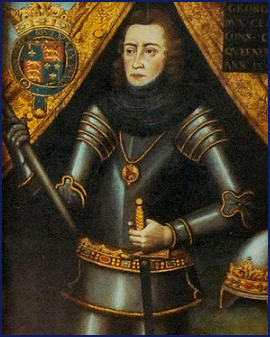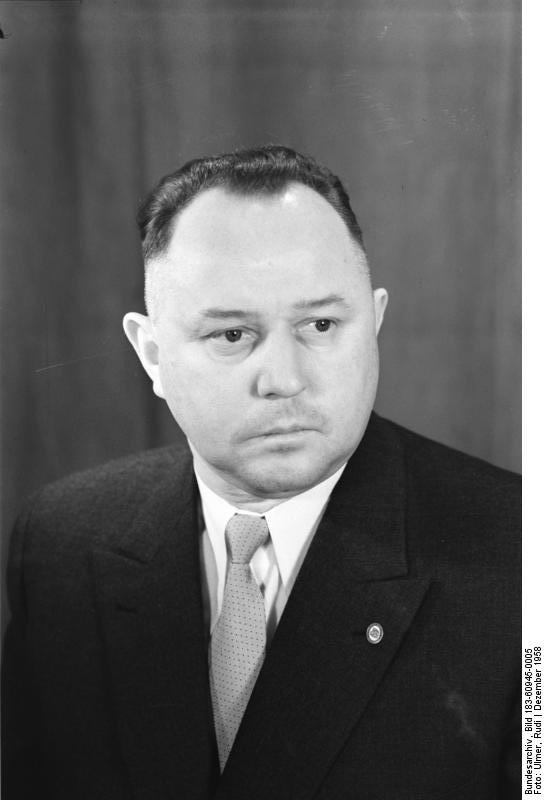In the next in our series on the Wars of the Roses, this article looks at the terrible Prince George and his role in the downfall of the Kingmaker, The Earl of Warwick.
It follows our introduction to the Wars of the Roses available here and our article on Edward III’s descendants and the causes of the Wars of the Roses available here. Later were the battles of the war from 1455-1464 and most recently the Kingmaker.
Prince George – the Duke of Clarence – was the worst type of man. Born the third son, he was never happy with his lot in life. Unlike his younger brother, Richard, who was loyal to the Plantagenets through thick and thin, George supported his family only when it suited him best. After years of watching his lecherous brother, King Edward IV, run England’s monarchy and nobility into the ground, George began to get rather restless.
Prince George, Duke of Clarence
Queen Elizabeth Woodville had still not given the King a son despite being pregnant every year of marriage. This made Prince George heir to his brother’s throne. But it was a shaky arrangement as Elizabeth was almost supernaturally fertile and it was only a matter of time before she bore a boy and bumped George further down the line. This the turncoat Prince could not allow. When the Earl of Warwick began sniffing around for a new ally against the King, George jumped at the chance. In a secret wedding in Calais, the Duke of Clarence married Isabelle Neville – Warwick’s eldest daughter. This went against the King’s wishes. The plan was to kill the King and put George and Isabelle on the throne. Had George been a smarter, less egotistical man he would have understood that Warwick was using him, plain and simple. But George honestly believed that he deserved to be King and Warwick was simply helping him along. And so, on July 26 1469 at the Battle of Edgecote Moor, George captured his brother and took him prisoner. It took King Edward IV eight months to escape and rally an army to counter-attack his treacherous brother and Warwick. Edward’s army defeated his enemy so thoroughly that the rebels shed their coats as they retreated. Hence the name of the battle – Losecote Field.
After Warwick’s humiliation, he and George fled to Calais, leaving Edward back in charge. The rebels planned to make an alliance with their former enemy, Margaret of Anjou – the wife of mad King Henry VI and mother to the Lancastrian heir. In order to achieve this new alliance, Warwick had to literally beg on his knees. Margaret was not convinced, but she was in a precarious position as she was living on the charity of the French court and her household was becoming a drain on the French King. The French King is also believed to have encouraged the alliance. But Margaret wanted more than promises and apologies from a kneeling man. She wanted an emblem. Warwick suggested the marriage of Margaret’s son, Prince Edward, to Warwick’s youngest daughter, Anne Neville. Margaret accepted, although some historians believe that she was only using Warwick for his army and planned to put Anne aside as soon as Prince Edward was King.
This is where Warwick made his final mistake - he backed the wrong horse. He simply put his plans with George aside and married his youngest daughter to Henry VI’s son. His new plan was to put Henry back on the throne, wait until he died (or kill him) and rule through the new King.
Although Warwick was a brilliant soldier, he was lacking in common sense. Simple truths were lost on him; most notably the truth that if George betrayed his brother, he would surely betray the kingmaker too.
The return of Warwick
Armed with his new ally, Warwick returned to England and led an army against Edward. But he forgot one vital little piece in this jigsaw puzzle of deceit … He had trained Edward. The King was a great fighter just like him. We can, of course, never know what Warwick was expecting from his adversaries, but we do know that he severely under-estimated Edward and Richard. Edward and Richard’s Yorkists crept up slowly and silently in the night, hidden by mist and darkness. On the morning of April 14 1471, while the Lancasters were rising from slumber, the Yorkists attacked. In the confusion and fog, some of Warwick’s soldiers actually stabbed each other. When the word, “treachery” ricocheted across the battle, even more Lancastrians killed one another. And as for Warwick himself, the mighty Earl was pulled off his horse, had his armor pried open and was stabbed in the neck. Warwick was so influential that without him the Lancasters were simply lost. Those that weren’t mauled on the battlefield retreated and ran for their lives. The body of the kingmaker was hanged for four days to quell rumors of his survival and to further break the Lancastrian spirit. This battle, the Battle of Barnet, marks the downfall of the House of Lancaster.
It took three weeks for Margaret of Anjou and her son to get to England. They had been held back by winds across the channel. The news of the defeat and death of Warwick was such a blow that Margaret ordered the tired army to march to Wales in order to recruit more men. And where was George in all of this? He had gone back to his brother, begging forgiveness. Edward was said to have known that his brother would return with his tail between his legs. The three brothers then marched to Wales, hoping to intercept the Lancastrian army before they made it over the River Severn and joined the angry Welshmen on the other side.
Margaret of Anjou, her son, his new bride and all the Lancastrians they could summon, made it as far as Tewkesbury before England herself decided to end the pointless war. The River Severn was flooded; no one could get across. The army was trapped between drowning and the Yorkists. The Lancastrians were choice-less; they had to do battle in their starving and fatigued state. The Yorkists weren’t any better off; they had had to march at a run, recruiting soldiers as they passed through villages. May 4 1471 saw two exhausted armies make one more stand for the crown. Henry VI’s son, Prince Edward, was no stranger to battlefields despite being only 18, but he was no leader; he could not rally his troops nor control them. The Yorkists, being led by the Plantagenet brothers, had better command. Richard, also aged 18, had led the army at the Battle of Barnet. He was well respected, well trained and very clever. And under him the Yorkists walked away from Tewkesbury victorious. Prince Edward died in battle and his mother was taken as prisoner. Prince Edward’s new widow should have been taken hostage with Margaret but she was taken to the house of the Duke of Clarence, where she was kept as prisoner in everything but name by her sister and brother-in-law. That is, until Prince Richard snuck her away and married her.
The battle of Tewkesbury saw the end of the Lancastrian claim to the crown. Henry VI “mysteriously” died some weeks later in the tower. Was he murdered? And if so, by whom? History’s lips are sealed.
And so the Yorkists returned to a somewhat peaceful reign knowing that the Lancastrians had no heir to fight for ... Except for that distant relative called Henry Tudor who lived in France. But the Plantagenets didn’t seem too bothered about him.
Edward once again returned to his throne which he would pass on to his baby son once he was old enough. If only Edward had lived long enough for that to happen.
By M.L King, a history enthusiast and part-time blogger. You can connect with her on Facebook here.
The next article in The Wars of the Roses series is about a love story during the war - available here.
Do you want to try your hand at some history writing? If so, click here for more information and then get in touch!
References
- www.thewarsoftheroses.com
- British History by Miles Kelly
- www.britannica.com
- www.battlefieldstrust.com




















